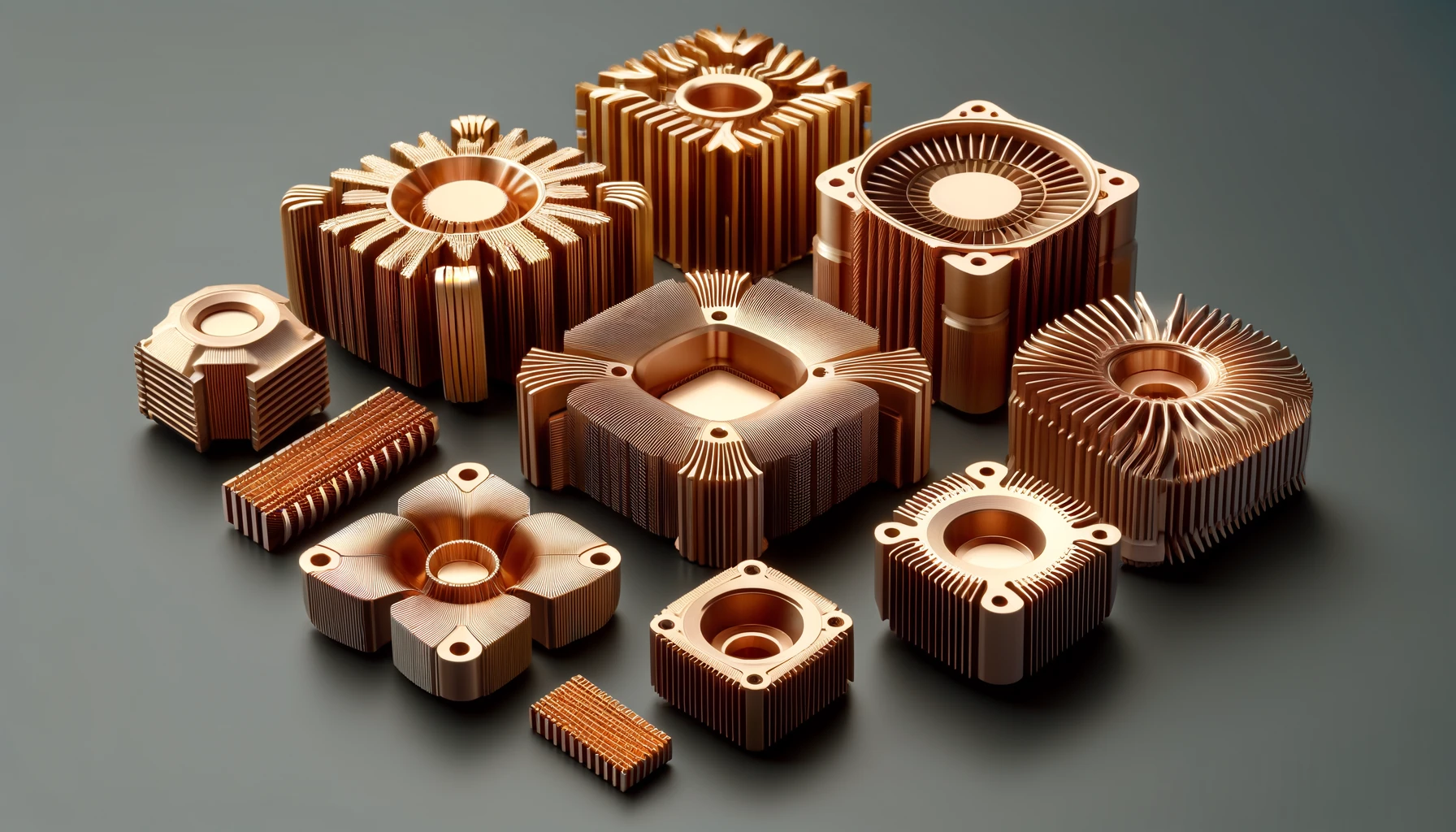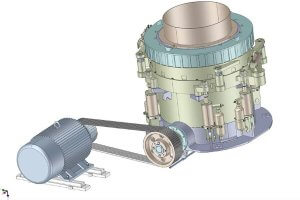When machining parts with CNC, not all materials can be precisely processed. Some materials are too hard and may damage the CNC machining tools, making them unsuitable for precision machining unless they are special materials or laser-cut. So, what are the requirements for materials in CNC machining?
CNC Machining Parts
Materials for CNC machining parts can be divided into two categories: metal materials and non-metal materials.
For metal materials, stainless steel has the highest hardness, followed by cast iron, then copper, and finally aluminum.
Processing of Ceramics and Plastics
- Material Hardness Requirements: In certain scenarios, the higher the material’s hardness, the better. This is limited to the hardness requirements of the CNC-machined parts. The material to be processed cannot be too hard, assuming it is harder than the machining tools.
- Moderate Hardness: The material should have moderate hardness, at least one grade lower than the machine parts’ hardness. The choice of machine parts should be based on the function of the processed component.
In summary, precision machining imposes some requirements on materials. Not all materials are suitable for machining. Materials that are too soft do not need machining, and materials that are too hard cannot be machined.
Techniques to Reduce Errors in CNC Machining Parts
Reasonable error is a normal phenomenon in CNC machining. No matter how accurate the machining measures are, parts manufacturers cannot avoid normal errors. In the inspection report, as long as the error is reasonable, it is qualified. Significant errors are certainly unqualified. What measures are generally taken to avoid this?
- Local Errors in CNC Machining Parts Many automated CNC parts manufacturers often encounter situations where the workpiece dimensions are reasonable, but local dimensions have significant errors. This is mainly caused by excessive gaps between the lathe’s nut and lead screw. Originally, there was a gap, but as the lathe operates over time, the gap between the nut and screw naturally increases. When programming precision parts, the compensation error for this gap was considered, but the new gap was not compensated, leading to local dimensional discrepancies. Generally, this gap needs to be repaired or the lead screw replaced.
- Overall Errors in CNC Machining Parts If the overall error of the workpiece is large, it usually needs to be redone. Loose connections between the lathe’s nut and screw can easily cause significant errors. During workpiece machining, cutting resistance is substantial. If the joint is loose, there will be dimensional drift during cutting. The lathe joints need to be tightened to eliminate the error. Another scenario is that a loose electric tool holder can also cause significant workpiece errors. During tool changes, if the holder cannot lock automatically, the cutting point will shift during cutting, inevitably leading to significant errors. To avoid this error, the tool holder must be locked.
Other Articles You Might Enjoy
- What are the requirements for CNC machining of bearing parts?
Bearings are common and important parts in the automotive industry, which can support transmission components and transmit torque. Generally, CNC machining centers are used to process bearing parts. So what…
- Evolution of Mills and Machining Centers: The Future of CNC Machining Parts
Stepping into the world of CNC machining, you quickly realize how pivotal mills and machining centers are in crafting precise parts. Over time, these machines have evolved significantly, transforming from…
- Precision CNC Machining of Steel: High-Volume Production
Precision CNC Machining and High-Volume Production As an integral part of modern manufacturing processes, Precision Computer Numerical Control (CNC) machining brings about unmatched accuracy and consistency in the production of…
- Aluminum CNC Machining Service for Custom Parts
Aluminum CNC machining stands at the forefront of modern manufacturing, epitomizing precision, versatility, and efficiency. With its widespread applications across industries ranging from aerospace to automotive and beyond, aluminum CNC…
- Smart Choice for CNC Machining Parts: Comprehensive Analysis of Horizontal Machining Centers
When it comes to CNC machining parts, the type of machining center you choose can significantly impact the efficiency and quality of your work. Horizontal CNC machining centers (HMCs) are…
- Optimizing CNC Machining with Hybrid Materials: Benefits and Challenges
Introduction: CNC Machining and the Role of Hybrid Materials CNC machining, short for Computer Numerical Control machining, is a manufacturing process where pre-programmed computer software dictates the movement of factory…
- What are the requirements for CNC machining of bearing parts?
Bearings are common and important parts in the automotive industry, which can support transmission components and transmit torque. Generally, CNC machining centers are used to process bearing parts. So what…
- Evolution of Mills and Machining Centers: The Future of CNC Machining Parts
Stepping into the world of CNC machining, you quickly realize how pivotal mills and machining centers are in crafting precise parts. Over time, these machines have evolved significantly, transforming from…
- Precision CNC Machining of Steel: High-Volume Production
Precision CNC Machining and High-Volume Production As an integral part of modern manufacturing processes, Precision Computer Numerical Control (CNC) machining brings about unmatched accuracy and consistency in the production of…
- Aluminum CNC Machining Service for Custom Parts
Aluminum CNC machining stands at the forefront of modern manufacturing, epitomizing precision, versatility, and efficiency. With its widespread applications across industries ranging from aerospace to automotive and beyond, aluminum CNC…
- Smart Choice for CNC Machining Parts: Comprehensive Analysis of Horizontal Machining Centers
When it comes to CNC machining parts, the type of machining center you choose can significantly impact the efficiency and quality of your work. Horizontal CNC machining centers (HMCs) are…
- Optimizing CNC Machining with Hybrid Materials: Benefits and Challenges
Introduction: CNC Machining and the Role of Hybrid Materials CNC machining, short for Computer Numerical Control machining, is a manufacturing process where pre-programmed computer software dictates the movement of factory…
- Nickel Alloys in CNC Machining: Inconel 718 vs. Monel K-500 for Aerospace and Marine Applications?
Introduction to CNC Machining and Nickel Alloys Computer Numeric Control (CNC) machining is a pivotal process in the manufacturing industry, using pre-programmed computer software to dictate the movement of factory…
- The Future of CNC Machining in Sustainable Manufacturing
The Future of CNC Machining in Sustainable Manufacturing CNC (Computer Numerically Controlled) machining and sustainable manufacturing are two significant areas with increasing potential in the industrial sector. CNC machining is…
- CNC Machining Materials Deep Dive: Acrylic vs. Polycarbonate for Transparent Parts
CNC Machining Materials Deep Dive: Acrylic vs. Polycarbonate for Transparent Parts Computer Numerical Control (CNC) machining is a production process that involves the use of computers to control machine tools,…
- Precision CNC Machining for Advanced Medical Imaging Devices
Precision CNC Machining and its Relevance to Advanced Medical Imaging Devices Precision Computer Numerical Control (CNC) machining is a highly accurate manufacturing methodology that entails the use of computers to…
- Eco-Friendly CNC Machining: Sustainable Materials and Practices
Eco-Friendly CNC Machining: An Introduction CNC (Computer Numerical Control) machining is a manufacturing process that commands the movement of factory machinery and tools using pre-programmed computer software, ensuring precise design…
- The Ultimate Guide to Acquiring CNC Machined Parts
In today's business landscape, there are two main categories: production and services. While service-based businesses are easier to establish, production businesses hold greater potential for growth. If you're considering venturing…
- The Evolution of CNC Machining: Traditional vs. New Age Materials
Introduction to CNC Machining CNC machining stands for Computer Numerical Control machining, a process used extensively in modern manufacturing to control machine tools with computers. This method allows for the…
- The Future of Biomedical CNC Machining: Innovations in Material Compatibility and Functionality
Introduction to Biomedical CNC Machining Biomedical CNC (Computer Numerical Control) machining stands as a cornerstone in the development of medical devices, enabling the precise fabrication of complex parts essential for…
- Material Versatility in CNC Machining: From Titanium to Thermoplastics
Introduction to CNC Machining CNC machining stands as a cornerstone in the manufacturing sector, enabling the precise creation of parts and components. This process utilizes computer numerical control (CNC) to…
- Applications and Advantages of Bronze CNC Machining
1. Introduction: The Enduring Allure of Bronze in CNC Machining In this opening section, we explore the timeless appeal of bronze as a material for CNC machining. From its rich…
- CNC Machining: Understanding Materials, Processes and Techniques( rivets Nora)
When it comes to Computer Numerical Control (CNC) machining processes utilised in manufacturing industries worldwide, there’s an expansive range of materials, procedures and techniques that play a crucial role. These…
- Understanding CNC Machining: From Materials to Techniques( anodized aluminum Linda)
In the world of precision machining, Computer Numerical Control (CNC) technology plays a critical role. With an array of materials such as titanium, aluminum, cast iron steel, and innovative techniques…
- Aerospace CNC Machining: What You Need to Know
At present, the global aerospace industry market value has increased by 278.43 billion, an increase of 6.6% compared to 2022. The ultra-high value proves that innovation in the aerospace industry…
- Precision CNC Machining for High-Performance Industrial Machinery
Precision CNC Machining for High-Performance Industrial Machinery The process of Precision CNC (Computer Numerical Control) machining is at the core of manufacturing high-performance industrial machinery. This technique leverages a computer's…
- 9 Advantages of CNC Machining Over Conventional Machining
In today's manufacturing landscape, the utilization of numerical systems has become ubiquitous across various industries, thanks to the advent of personal computers. Among the favored fabrication and manufacturing applications, the…
- Exploring the World of CNC Machining Parts: From Mills to Lathes
In today's manufacturing world, CNC (Computer Numerical Control) machines are indispensable. These high-tech machines are capable of producing incredibly precise and complex parts, making them essential for industries ranging from…
- Innovative CNC Machining for Complex Surgical Tools
Introduction to CNC Machining and its Significance in Surgical Tools Manufacturing CNC machining, an acronym for Computer Numerical Control machining, plays a significant role in the manufacturing world. Being an…
- Nylon CNC Machining Service for Custom Parts
Nylon is an engineering plastic known for its high strength, wear resistance, and chemical inertness. It possesses excellent mechanical properties and durability, making it widely used in various fields including…
- Nickel vs. Cobalt Alloys in High-Temperature CNC Machining: A Detailed Analysis?
Nickel and Cobalt Alloys in High-Temperature CNC Machining Both Nickel and Cobalt alloys play an essential role in high-temperature CNC machining. These metal alloys are popular choices due to their…









